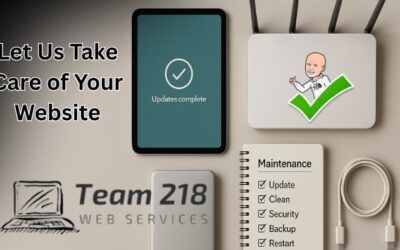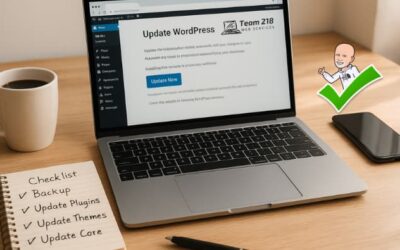Empty Buildings, Busy Bulldozers: Why We Keep Building When Offices Sit Empty

The Paradox You Can’t Ignore
You’ve seen it. You’ve probably muttered something under your breath about it.
There’s a sparkling new commercial building going up on the edge of town… right across the street from another brand-new building with empty parking lots and “For Lease” signs collecting sun damage.
So why are we still pouring concrete and hanging drywall when we can’t even fill what’s already built?
Welcome to the strange logic of modern commercial development where demand is optional, appearances matter more than function, and everyone’s hoping the next tenant will fix everything. It’s part real estate strategy, part wishful thinking, and part tax-fueled shell game. And it’s happening everywhere – including right here in Iowa.
Incentives, Not Logic, Often Drive Development
Let’s start with one of the biggest culprits: financial incentives. When a city dangles carrots like tax increment financing (TIF), opportunity zones, or property tax abatements, developers jump – and who can blame them?
In many towns, especially those trying to grow their tax base or “revitalize” underdeveloped areas, construction becomes less about market demand and more about checking the right boxes to unlock government funding. These projects might be labeled as progress, but if you drive by at 2 p.m. on a weekday and there’s not a single car in the parking lot, you have to wonder: *progress for who?*
There are situations where cities feel pressure to keep up with neighboring towns that are building. That leads to what you might call “incentive inflation” – who can offer the biggest break, the loosest zoning, the most attractive package? The result? Dozens of shiny new buildings… and not enough businesses to fill them.
Speculative Capital Has to Go Somewhere
Next, let’s talk about speculation. Commercial real estate is one of the oldest and safest-looking investments out there; especially when interest rates are weird, stocks are volatile, and investors are desperate for predictable returns. But predictable doesn’t mean practical.
Many of these buildings are built with the goal of appreciation, not occupancy. They’re developed on the assumption that someone will lease them… eventually. Sometimes it’s local investors. Other times, it’s national REITs (real estate investment trusts) looking to diversify their portfolios with Midwest assets.
For them, the building is just a line item. Whether it’s filled or not? Secondary. As long as the structure is up, maintained, and insurable, it’s still “working” from a capital perspective even if it’s not actually serving the community or generating local revenue.
Modern Tenants Want Modern Buildings
This one’s a little more sympathetic. The reality is that many older commercial spaces are simply outdated. From awkward layouts and lack of accessibility to bad insulation and prehistoric infrastructure, older buildings often can’t support what modern tenants demand.
In today’s commercial landscape, tenants want plug-and-play tech infrastructure, environmentally friendly systems, ample natural light, ADA compliance, and – believe it or not – visual appeal. A dated strip mall with stained ceiling tiles and a flickering fluorescent buzz doesn’t exactly scream “move your tech startup here.”
In places like Coralville or Tiffin, we’re seeing a shift toward mixed-use or open-concept commercial design that reflects changing business models – hybrid work, flexible lease terms, and shared amenities. Instead of trying to retrofit the 1995 insurance office into a modern dental clinic, it’s often cheaper and faster to build new from scratch.
Just Because It’s Leased Doesn’t Mean It’s Occupied
This is where the numbers start to lie. If you look at local occupancy stats, you might think commercial buildings are doing just fine. But dig a little deeper, and you’ll find a whole lot of ghost tenants.
Post-COVID hybrid and remote work models have left many buildings in a weird limbo. They’re technically leased but barely used. Offices sit 80% empty while companies maintain the space out of contractual obligation or inertia. You know what that means? Developers can still claim their buildings are “leased” even if no one’s actually showing up.
This illusion of success fuels further construction. Other developers see “leased” properties and assume there’s demand. Cities do the same. But the reality on the ground? It’s a lot of unused space, underutilized infrastructure, and HVAC systems running to keep plants alive in the lobby.
Zombie Buildings: Occupied by Paper, Not People
Let’s call it what it is. These are zombie buildings. They look alive on paper, but they’re dead inside. No employees. No foot traffic. No economic activity. Just a line item on someone’s quarterly report.
What’s worse is how this distorts the market. When buildings that aren’t truly active are still listed as “leased,” it prevents real supply-and-demand correction. Developers build more, assuming there’s unmet need. Meanwhile, more space sits idle, and everyone pretends everything’s fine.
Zoning Laws and Conversion Nightmares
Another reason we don’t repurpose these empty buildings? Zoning. Many of these commercial buildings can’t be legally converted into anything else without jumping through flaming bureaucratic hoops. Want to turn that outdated office park into condos or affordable housing? Hope you enjoy two years of hearings, engineering reviews, and red tape.
In Iowa, a lot of municipalities are still operating under decades-old zoning code that hasn’t evolved to match modern needs. And that stagnation limits adaptive reuse. Instead of making it easier to repurpose old buildings, cities often make it easier to build new ones.
Even if conversion is technically allowed, the costs can be brutal. Asbestos removal, code upgrades, fire suppression, ADA retrofitting—it’s usually cheaper and faster to bulldoze and build from scratch. Which is exactly what keeps happening.
Momentum Over Markets: When It’s Too Late to Turn Back
One of the simplest and dumbest reasons some buildings get built is that the wheels were already turning. Once financing is secured, designs are approved, and equipment is ordered, it becomes more expensive to stop than to finish.
This “momentum mentality” drives a surprising amount of construction. Even when market conditions shift like a global pandemic that wipes out half of in-office work, projects push forward. Why? Because pulling the plug could mean lawsuits, defaulted loans, or worse: admitting defeat.
So what do you do? You finish the building. You slap a banner on it. You hope someone eventually moves in. Meanwhile, you start planning the next one… just in case the market turns around.
Case Studies from Around Iowa
Let’s get hyperlocal for a second. In the Iowa City–Coralville–North Liberty corridor, we’ve seen several examples of buildings going up while older ones still haven’t reached full occupancy. Mixed-use centers in growth zones like Tiffin look promising—but you’ll still find half-vacant units with “Retail Space Available” signs sitting for months.
Over in Clinton, a push to develop riverfront and downtown spaces led to new construction that, while beautiful, hasn’t always translated to foot traffic or business success. Local leaders often cite long-term vision but small business owners in these areas sometimes struggle to justify the rent versus the return.
And in the Des Moines suburbs, commercial strips continue to be built even as chains exit the market. When national brands fold or relocate, their old units sit idle. Still, new construction continues, chasing a speculative future that hasn’t arrived yet.
The Psychological Element: Busy Looks Better Than Smart
Let’s be honest: cities and developers want to look like they’re doing something. Cranes on the skyline are a public relations win. Ribbon-cuttings get photos in the paper. Empty lots don’t.
There’s a powerful psychological component to “visible progress.” Even if a project doesn’t meet real demand, the optics of growth are often too tempting to pass up. And when budgets are driven by election cycles or investor reports, long-term logic doesn’t always win the day.
So What’s the Real Cost?
On the surface, these buildings might not seem like a big deal. But over time, a community littered with underused space becomes a burden. Infrastructure is stretched. Local governments lose tax revenue when businesses fail. And residents are left wondering why their downtowns feel hollow even as the skyline grows.
Every empty building is a missed opportunity – housing that wasn’t built, a park that wasn’t funded, a small business that couldn’t afford rent. When we prioritize speculative construction over community-focused planning, everyone pays the price.
Call to Action
Iowa businesses deserve better than empty promises and empty buildings.
If you’re building something real—whether it’s a business, a brand, or just your reputation—Team 218 can help you do it smarter.
💻 Web design, SEO, and straight-up honest advice.
👉 Let’s chat.








0 Comments